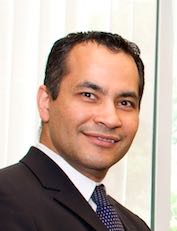Co-Located Conference AgendasStem Cells for Drug Discovery & Toxicity Screening 2017 |  Other Track Agendas Other Track AgendasOrgan-on-a-Chip and 3D-Culture: Companies, Technologies and Approaches | Organ-on-a-Chip and Body-on-a-Chip: In Vitro Systems Mimicking In Vivo Functions |

Monday, 10 July 201708:00 | Conference Registration, Materials Pick-Up, Morning Coffee and Pastries | |
Session Title: Opening Plenary Session | Session Sponsors |
| | 09:00 |  | Keynote Presentation Integration of Systems Biology with Organs on Chips for Disease Modeling and Drug Development
Linda Griffith, Professor, Massachusetts Institute of Technology (MIT), United States of America
|
| 09:30 |  | Keynote Presentation Fitting iPSCs, 3D Cell Culture, Tissue Chips and Microphysiological Systems into the Grand Scheme of Biology, Medicine, Pharmacology, and Toxicology
John Wikswo, Gordon A. Cain University Professor, A.B. Learned Professor of Living State Physics; Founding Director, Vanderbilt Institute for Integrative Biosystems, Vanderbilt University, United States of America
As the engineering supporting body-on-chip (BoC) studies advances and begins to penetrate both science and industry, we need to explore three separate multidimensional spaces – one that spans BoC components, one that covers the analytical techniques to characterize BoC performance and drug response, and a third that spans the fields of application. The component technologies being brought together include induced pluripotent stem cells (iPSCs), 3D cell culture (which is beginning to involve vascularization), tissue-chip bioreactors that enable the recreation to tissue-like microenvironments, and the hardware required to operate coupled microphysiological systems in a manner that recapitulates human physiology and its response to drugs and toxins. The second, analytical space is only now coming to the fore. To date, most tissue-chip studies have reported morphological features, the expression of small sets of genes, or the secretion of a few, organ-specific compounds. A much more comprehensive battery of techniques is already in regular use in the pharmaceutical industry, including genomics, proteomics, and transcriptomics. Metabolomics is rapidly moving into prominence as the instrumentation improves and the databases expand. What is needed, though, are comprehensive comparisons between in vitro and in vivo studies, as has been recently demonstrated with a weighted gene coexpression network analysis that compare rat liver in vivo with both mouse liver in vitro and rat primary hepatocytes growing in a dish, which showed that a mouse liver was a better model of the rat liver than the primary rat hepatocytes in a dish, which more closely resembled a rat liver exposed to a significant toxic load. The BoC community needs to compare, for example, a mouse with a mouse-on-a-chip to confirm that the appropriate physiology is being recapitulated. The final space spans biology, medicine, pharmacology, physiology and toxicology. BoCs offer, for the first time, the ability to recreate in vitro and in parallel, with an ever-dropping cost, the effects of organ-organ interactions. Nowhere will this be more important than in studies of absorption, distribution, metabolism, and excretion - toxicity (ADME-Tox), where one may need skin, lung, or gut to absorb a drug or toxin, liver and kidney to metabolize and excrete drug metabolites and toxins, adipose and muscle tissue to store metabolites and toxins, and a means to characterize in depth the underlying processes and how they affect the chosen target organs. BoCs will thereby contribute not only to toxicology, but our fundamental understanding of cellular biology and systems physiology, thereby advancing both pharmacology and medicine. Given that we will never create a perfect microHuman BoC, we can use these three spaces to guide the compromises we make as we create useful models, even toy models, of human physiology. |
| 10:00 |  | Keynote Presentation Engineered Living Systems: Current State and Future Potential
Roger Kamm, Cecil and Ida Green Distinguished Professor of Biological and Mechanical Engineering, Massachusetts Institute of Technology (MIT), United States of America
Following on recent advances in understanding single cell behavior (Carrera & Covert, Trends in Cell Biology, 2015), and in developing simple, proof-of-concept biological machines (Raman et al., PNAS, 2015, Park et al., Science, 2016), organoids (Fatehullah et al, Nature Cell Biology, 2016), and organ-on-chip technologies (Huh, et al., Science, 2010), efforts are underway to standardize manufacturing methods for engineered living systems (ELS). The approaches proposed, however, are widely divergent and often lack a sound basis due to the absence of a fundamental understanding of aspects unique to ELS – e.g., complexity, the central role of emergence – and fail to take advantage of their extraordinary capabilities – self-assembly, growth, self-repair, adaptation, learning.
We need to build on our current knowledgebase for the development and design of ELS, rethinking much of what we have learned from abiotic engineered systems. A major effort is therefore required to characterize, model and image the dynamical behavior of ELS, and thus establish the design principles needed for robust manufacture. While many ELS can survive merely by diffusion of gases and nutrients from their environment, most systems exceeding several hundred microns in lateral dimension require some means for convective transport, such as the circulatory system found in many living organisms. Several approaches have been employed to meet these needs, either by engineered conduits or induced network growth from seeded or suspended cells. In this talk, some of these methods will be described, focusing on networks that form by self-assembly, tend toward a stabilized perfusable network within 1-2 weeks, synthesize and organize their own matrix environment, and adapt to changing conditions. Both the successes and challenges of creating these networks will be discussed with the aim of developing reliable, vascularized ELS amenable to biomanufacture. |
| 10:30 | Coffee Break and Networking in the Exhibit Hall | 11:00 |  | Keynote Presentation Human “Body-on-a-Chip” Systems to Test Drug Efficacy and Toxicity
Michael Shuler, Samuel B. Eckert Professor of Engineering, Cornell University, President Hesperos, Inc., United States of America
Human microphysiological or “Body-on-a-Chip” systems are powerful tools to assess the potential efficacy and toxicity of drugs in pre-clinical studies. Having a human based, multiorgan system, that emulates key aspects of human physiology can provide important insights to complement animal studies in the decision about which drugs to move into clinical trials. Our human surrogates are constructed using a low cost, robust “pumpless” platform. We use this platform in conjunction with “functional” measurements of electrical and mechanical activity of tissue constructs (in collaboration with J. Hickman, University of Central Florida). Using a system with four or more organs we can predict the exchange of metabolites between organ compartments in response to various drugs and dose levels. We will provide examples of using the system to both predict the response of a target tissue as well as off-target responses in other tissues/organs. We believe such models will allow improved predictors of human clinical response from preclinical studies. |
| 11:30 |  | Keynote Presentation Human Emulation System: an Organs-on-Chips Platform for Advancing Drug Discovery and Development
Katia Karalis, Executive Vice President of Research, Emulate, Inc., United States of America
Micro-engineered Organs-on-Chips show physiological functions consistent with normal living human or animal cells in vivo. Each Organ-Chip is composed of a clear flexible polymer about the size of a AA battery that contains hollow channels lined by living human cells. The cells are cultured under continuous flow and mechanical forces thereby recreating key factors known to influence cell function in vivo. Cells cultured under continuously perfused, engineered 3D microenvironments go beyond conventional 3D in vitro models by recapitulating in vivo intercellular interactions, spatiotemporal gradients, vascular perfusion, and mechanical microenvironments. Integrating cells within Organs-on-Chips, enables the study of normal physiology and pathophysiology in an organ-specific context. Cellular/molecular level resolution is enhanced and demonstrates key insights into the mechanisms of action of drug induced toxicity. Numerous recent advances in applications of these systems are relevant in drug discovery/development for compound selection, and in de-risking mechanistic concerns using various organ systems. In this presentation we will highlight studies from collaborative efforts across our Human Emulation System with various academic and industry partners to demonstrate the utility of the system as a more predictive human-relevant alternative for efficacy and safety testing of new chemical entities in humans. |
| 12:00 |  | Keynote Presentation Novel Microphysiological Multi-Organ Systems for Studies of Human Metabolic Diseases in Drug Discovery
Tommy Andersson, Drug Metabolism and Pharmacokinetics, Cardiovascular and Metabolic Diseases, AstraZeneca, Gothenburg, Sweden
Currently used pre-clinical models often suffer from poor translation of drug responses to the patient due to the limited knowledge gained in the efficiency and mode of action of the drug candidate. This contributes to high attrition rates in early clinical programs. Multi organ-on-a-chip emulating human physiology have the possibility to improve success rate by mimicking the human disease state and improve selection of the right targets and compounds early in drug discovery. Such models will not only improve translation to patients but also reduce time spent in early clinical programs as well as reducing the needs for animal models. We developed a human liver - pancreatic islets chip model. The model allows cross talk between cells from both organs in a fluidic system and responds in a physiological way to glucose load by increased insulin secretion leading to increased glucose consumption (figure). Initial studies indicate that the model can become insulin resistant and thus can be used as a metabolic disease model. Ongoing studies are investigating how insulin resistance in liver cells effects islet function by using the insulin receptor antagonists. |
| 12:30 | Networking Lunch in the Exhibit Hall, Meet Exhibitors and View Posters | |
Session Title: Technology Trends in the Organs-on-Chips Space, circa 2017 |
| | 13:30 | Engineering Microphysiological Models of Human Cardiac and Skeletal Muscle Disease
Megan L McCain, Assistant Professor of Biomedical Engineering and Stem Cell Biology and Regenerative Medicine, University of Southern California Keck School of Medicine, United States of America
Cardiovascular diseases are the leading cause of death in the United States. One reason for this statistic is that researchers in academia and industry have been forced to rely on experimental models, such as rodents or simplified cell culture systems, that lack relevance to native human heart tissue. In this talk, I will describe our efforts in engineering microphysiological models of human cardiac tissue as next-generation platforms for cardiac disease modeling and drug screening. We are focused on developing and integrating three core technologies: (1) Enhancing the differentiation of human induced pluripotent stem cells (hiPSCs) into cardiac myocytes; (2) Engineering cellular microenvironments that mimic key features of native cardiac tissue; and (3) Developing quantitative assays for characterizing essential functional outputs, such as contractility. I will also describe how we have extended our technologies to skeletal muscle tissue as new platforms for modeling human skeletal myopathies. Together, these microphysiological models of human striated muscle tissue have many applications in establishing human disease mechanisms and screening the functional effects of drugs with disease and patient specificity. | 14:00 |  | Keynote Presentation Microfluidics Within a 96-Well
Noo Li Jeon, Professor, Seoul National University, Korea South
Conventional microfluidic devices based on Soft Lithography use channels formed by sealing a replicated PDMS structure against a transparent substrate such as a glass coverslip. Although these devices have been widely used in laboratory setting, it has been challenging to adapt them for high-throughput drug screening applications due to material properties (small molecule absorption onto PDMS surfaces) and miniaturization problems.
This presentation will describe a new type of microfluidic device that is shaped like a 96-well and fit completely inside the well. This device can be used to pattern 3D gels and cells for organ-on a chip applications. We have successfully used this device to co-culture neurons and schwann cells as well as endothelial cells and fibroblasts and obtained results (myelination after long-term coculture and angiogenesis/vasculogenesis, respectively) similar to ones obtained in conventional microfluidic devices using PDMS. |
| 14:30 |  Technology Spotlight: Technology Spotlight:
Modeling and Simulation of Microfluidic Organ-on-a-Chip Devices
Matthew Hancock, Managing Engineer, Veryst Engineering, LLC
Modeling and simulation are key components of the engineering development process, providing a rational, systematic method to engineer and optimize products and dramatically accelerate the development cycle over a pure intuition-driven, empirical testing approach. Modeling and simulation help to identify key parameters related to product performance (“what to try”) as well as insignificant parameters or conditions related to poor outcomes (“what not to try”). For microfluidic organ-on-chip devices, modeling and simulation can inform the design and integration of common components such as micropumps, manifolds, and channel networks. Modeling and simulation may also be used to estimate a range of processes occurring within the fluid bulk and near cells, including shear stresses, transport of nutrients and waste, chemical reactions, heat transfer, and surface tension & wetting effects. I will discuss how an array of modeling tools such as scaling arguments, analytical formulas, and finite element simulations may be leveraged to address these microfluidic organ-on-a-chip device development issues. I will also work through a few examples in detail.
| 15:00 | Coffee Break and Networking in the Exhibit Hall | 15:30 | Organs-on-a-Chip: Challenges and Opportunities to Improve Safety Assessment During Drug Development
Cristina Bertinetti-Lapatki, Lab Head Mechanistic Safety, Roche Pharma Research & Early Development, F. Hoffmann-La Roche Ltd, Switzerland
In spite of the recent technological advances and the use of more sophisticated in vitro assay read outs which aid to improve the selection of drug candidates early on, drug-induced pre-clinical and clinical toxicities remain one of the leading causes of attrition for the pharmaceutical industry. Up to date, drug safety assessment is carried out on animal models and in vitro single-cell line monolayers or short-lived primary cell cultures. However, the in vivo models fail to fully resemble human physiology and oversimplified in vitro approaches do not accurately reflect the complex physiology of a target organ and often are not predictive of in vivo toxicities. In recent years, the development of advanced cellular models growing in 3 dimensions, displaying improved physiology, involving multiple cell types and the use of platforms incorporating flow and sheer forces has raised hopes for improving the prediction of drug induced adverse effects in human relevant systems. The challenges and opportunities of using such novel in vitro models for the assessment and understanding of the mechanisms of potential drug toxicities will be discussed highlighting case studies that demonstrate the advantage of these platforms to de-risk safety liabilities during drug development. | 16:00 |  | Keynote Presentation Implementing Microphysiological Systems Into AstraZeneca Research Projects
Kristin Fabre, Microphysiological Systems Lead, Drug Safety & Metabolism, AstraZeneca, United States of America
Microphysiological systems (MPS) hold much promise for providing a physiologically-relevant human model that could be utilized for toxicity and efficacy screening during drug development. The AstraZeneca MPS Center of Excellence was established in the Fall of 2016, with a goal to 1) develop an effective strategy that identifies best-fit MPS platforms, 2) gain confidence in these models and finally, 3) implement into active projects if the technologies prove to be advantageous over current methods. The purpose of this presentation will illustrate how we have put this strategy into practice, highlighting AstraZeneca-MPS examples. Furthermore, we recognize the need to collaborate with government and other industry partners to catalyze the refinement, evolution and eventually, commercialization of MPS, which will also be discussed. |
| 16:30 | Public-Private Partnerships for MPS Initiatives
Lucie Low, Tissue Chip Program Manager, National Center for Advancing Translational Sciences (NCATS), NIH, United States of America
This tag-team presentation from representatives of government, industry, and regulatory bodies will address how public private partnerships can benefit MPS development, reproducibility, and commercialization strategies. | 17:00 |   | Moderator Fireside Talk: Fusing Microphysiological Systems and Systems Biology Toward Fulfilling Their Promise
Emma Sceats, Chief Executive Officer, CN Bio Innovations Ltd.
Douglas Lauffenburger, Professor/Head, Massachusetts Institute of Technology, United States of America
This fireside talk will examine advances in the field of systems biology and how the marriage of computational systems biology and microphysiological systems will be of significant importance to progress in both of these fields during the next decade.
Beer and Wine will be served during this fireside talk to facilitate networking and engagement.
|
| 18:00 | Networking Cocktail Reception with Beer, Wine and Appetizers. Enjoy the Boston Skyline, Engage with Colleagues and Discuss Collaborations and Partnerships | 19:30 | Close of Day 1 of the Conference | 19:45 | Dinner Short Course on 3D-Culture [Separate Registration Required] |
Tuesday, 11 July 201707:00 | Morning Coffee, Breakfast Pastries, and Networking in the Exhibit Hall | |
Session Title: Specific Examples of Organs-on-Chips Addressing Particular Physiological Systems |
| | 08:00 |  | Keynote Presentation Microengineered Physiological Biomimicry: Human Organ-on-Chips
Dan Huh, Associate Professor of Bioengineering and Wilf Family Term Endowed Chair, University of Pennsylvania, United States of America
Human organs are complex living systems in which specialized cells and tissues are assembled in various patterns to carry out integrated functions essential to the survival of the entire organism. A paucity of predictive models that recapitulate the complexity of human organs and physiological systems poses major technical challenges in virtually all areas of life science and technology. This talk will present interdisciplinary research efforts to develop microengineered biomimetic models that reconstitute complex structure, dynamic microenvironment, and physiological function of living human organs. Specifically, I will talk about i) bioinspired microsystems that mimic the structural and functional complexity of the living human lung in health and disease, ii) an organ-on-chip microdevice that emulates the ocular surface of the human eye, and iii) microengineered physiological models of human reproductive organs. |
| 08:30 | Construction of Human 3D Brain Model of Alzheimer’s Disease and Study of Microglial Inflammatory Activity Leading to Neuronal Damage
Hansang Cho, Assistant Professor, University of North Carolina-Charlotte, United States of America
Alzheimer’s disease (AD) is characterized by amyloid beta (A-beta) and tau pathologies, which lead to cognitive impairment and memory deficits followed by neuronal loss. The underlying mechanisms of AD remain poorly understood in the absence of relevant human AD brain models. Here, we developed a new organotypic human AD brain model using a 3D microfluidic platform. This 3D AD brain microfluidic platform allows investigations of neuron-glia interactions by differentiating neurons and astrocytes from genetically modified human neural progenitor cells and co-culturing adult human microglia. In this model, AD brain signatures were observed with pathological levels of A-beta, phosphorylated tau, and tau tangles derived from neurons, and interferon-gamma (IFN-?) produced by astrocytes. Also, we validated microglial inflammatory activation: recruitment in response to co-cultured AD neurons, morphological changes, and release of pro-inflammatory cytokines. Notably, microglial activation induced by a combination of A-beta and IFN-?, led to neuronal loss mediated by microglial inducible nitric oxide synthase (iNOS) expression and NO release. These results suggest that our microfluidic human 3D AD brain model may prove useful in developing new treatments to limit neuronal loss. | 09:00 |  | Keynote Presentation Human Microphysiological System of Arteriole Scale Blood Vessels for Disease Modeling and Toxicity Testing
George Truskey, R. Eugene and Susie E. Goodson Professor of Biomedical Engineering, Duke University, United States of America
We have developed an endothelialized tissue engineered blood vessel (eTEBV) microphysiological system by rapid generation of small-diameter vessels (400-800 µm inner diameter) by plastic compression. For the medial cell layer, we used human neonatal dermal fibroblasts (hNDFs), mesenchymal stem cells (hMSCs), induced pluripotent stem cells (iPSCs), or SMCs derived from hiPSCs. TEBVs were mechanically strong enough to allow endothelialization and perfusion at physiological shear stresses immediately after fabrication. eTEBVs perfused at physiological shear stresses for 1- 5 weeks expressed von Willebrand factor (vWF) and demonstrated EC-specific release of NO, indicating a confluent layer of ECs. After 1-5 weeks of perfusion, eTEBVs exhibited dose-dependent contraction and relaxation following exposure to phenylephrine and acetylcholine (ACh), respectively. In contrast, TEBVs without ECs or eTEBVs pre-treated with the NO synthase inhibitor L-NG-Nitroarginine methyl ester underwent vasoconstriction in response to ACh consistent with vasodilation by EC release of NO. TEBVs elicited reversible activation by acute stimulation by TNFa which transiently inhibited ACh-induced relaxation, and was eliminated by pre-exposure of eTEBVs to therapeutic doses of statins. Using smooth muscle cells derived from iPSCs, we produced a functional three-dimensional model of Hutchison-Gilford Progeria Syndrome (HGPS) is a rare, accelerated aging disorder caused by an altered form of the lamin A (LMNA) gene termed progerin. eTEBVs fabricated with smooth muscle cells from individuals with HGPS show reduced vasoactivity, increased medial wall thickness, increased calcification and apoptosis in comparison to eTEBVs fabricated with smooth muscle cells from normal individuals or primary MSCs. In addition, treatment with the rapamycin analog, RAD001, for one week increases HGPS TEBV vasoactivity. These results indicate that we can use human eTEBVs to model diseases in vitro. This work was supported by NIH grants UH2TR000505, 4UH3TR000505, and the NIH Common Fund for the Microphysiological Systems Initiative. |
| 09:30 | Development and Applications of a Peripheral Nerve-on-a-Chip
Michael Moore, Professor of Biomedical Engineering, Tulane University and Co-Founder, AxoSim, United States of America
Development of microphysiological models of the nervous system have lagged that of other organ systems, perhaps because the most relevant anatomical features of the nervous system involve complex architecture, while relevant functional endpoints are electrophysiological in nature. In particular, peripheral nerve has been under-studied even though it is highly susceptible to systemic toxicity owing to its location outside the blood-brain barrier and its long axons situated distant from cell bodies in the CNS. The design and development of a peripheral nerve-on-a-chip is presented, which features relevant tissue architecture and functional metrics that are analogous to clinical gold-standard histomorphometry and nerve conduction testing. Applications to peripheral neurotoxicity and peripheral nerve disorders are discussed with illustrative examples using rodent and human cells. | 10:00 | Coffee Break and Networking in the Exhibit Hall | 10:30 |  | Keynote Presentation Healthy and Diseased Lung-on-Chip Models For Preclinical Applications
Olivier Guenat, Head, Organs-on-Chip Technologies, ARTORG Center for Biomedical Engineering Research, University of Bern-Switzerland, Switzerland
Organs-on-chip are widely seen as being the next generation of in-vitro models. In contrast to standard models based on Petri dish technology, they allow in an unprecedented way to reproduce the cellular environment found in-vivo. A further benefit of these systems is the small amount of cells required to perform a cell-based assay. This is an important condition when scarce patients’ material is tested. The micro-engineered environment enables the cells to maintain their original functions. This enables the creation of in-vitro models with higher drugs’ response prediction capability in humans. However, prior to seeing organs-on-chip integrated in preclinical routine assays, requirements such as robustness, reliability and simplicity of use need equally to be met. We report on lung alveolar models that accurately mimic the physiological or the pathophysiological lung parenchyma situation. Furthermore they are designed in a robust way that guarantees a high reliability and ease of use. A first system reproduces the environment of the alveolar barrier, including an ultra-thin, porous and flexible membrane and the three-dimensional cyclic mechanical strain of the breathing motions. Primary cells from patients cultured at the air-liquid interface and exposed to a physiological cyclic mechanical stress are shown to preserve their typical alveolar epithelial phenotype and their barrier function. With a second system, an acute lung injury model is presented, which demonstrates the effect of the physiological, mechanical stress on the lung endothelial cells exposed to bacterial infection. In view to making this system compatible with a preclinical setting an array of 12 individual lung-on-chips was developed and integrated in a multi-well plate. The system is compatible with standard equipment used in a cell biology laboratory, such as a plate reader, microscopes and multi-pipette robots. |
| 11:00 |  | Keynote Presentation Applying Multi-Organ-on-a-Chip Technologies For Predictive Substance Testing
Reyk Horland, CEO, TissUse GmbH, Germany
Current in vitro and animal tests do not reliable predict the human responses to drugs or substances because they are failing to emulate the organ complexity of the human body, leading to high attrition rates in clinical studies. For example, absorption, distribution, metabolism and excretion (ADME) are key factors for predicting safety and efficacy of therapeutic candidates. However, these systemic effects are ignored in most in vitro tests. In order to emulate the physiological relevant in vivo crosstalk with the ability to perform systemic substance testing, we have developed a universal Multi Organ-Chip platform for long-term culture of human organ equivalents interconnected within a common capillary microfluidic network. The on-chip micro-pump ensures stable long-term circulation of media through the tissue culture compartments at variable flow rates, adjustable to physiological mechanical stresses of the respective tissues. This talk will present examples of current organ combinations and how the advanced knowledge and experience acquired will eventually enable the development of a Human-on-a-chip system. In addition, the question of how to qualify and validate these systems will be addressed. |
| 11:30 |  Technology Spotlight: Technology Spotlight:
Injection Moulding Rapid Prototyping of Microfluidic Structures
Markus Ebster, Vice President Sales & Marketing, z-microsystems®, Austria
Nick Lewis, Sales & Marketing North America, z-microsystems®, United States of America
A unique collaboration for rapid prototyping injection molded microfluidic devices.
z-microsystems is located in Austria and Canada specializing in micro-injection moldmaking and injection molding of microfluidic devices with over 15 years experience in the industry. Their unique core competence is how to help design a microfluidic device that is injection moldable, prototype it, manufacture the micro-injection molds in-house, transition into a pre-production/pilot phase before taking the process into full mass production under stringent clean room conditions.
Following several years of study and establishing a strong relationship with the University of Toronto, they identified the need to replace PDMS chip manufacture with a faster, better quality, more repeatable and cost effective method, to rapid prototype new microfluidic device designs. Collaborating with the university, z-microsystems Canadian office was eligible for federal funding and started a unique development project in November 2015. The development combines the universities know-how in their Centre for Microfluidics Systems with z-microsystems injection molding experience, to deliver a viable and value-added alternative to rapid prototype new microfluidic devices.
One year on since we presented this at Ontario on a Chip 2016, z-microsystems and U of T have further results & samples to present at this years conference. A commercial program is being developed enabling university and industry labs to use injection molding as a process from rapid prototyping thru to mass production for microfluidic devices.
| 12:00 |  | Keynote Presentation Micro and Nano-Engineered 3D-Printed Hydrogels For Organ-on-a-Chip Applications
Ali Khademhosseini, Professor, Department of Medicine, Brigham and Women’s Hospital; Wyss Institute for Biologically Inspired Engineering, Harvard University, United States of America
|
| 12:30 | Networking Lunch in the Exhibit Hall, Meet Exhibitors and View Posters | |
Session Title: Late-Breaking-Session -- Emerging Themese and Recent Advances in Organs-on-Chips Space |
| | 13:30 | Organ(s)-on-a-Chips Mimicking Physiological Environment and Parameters
Hiroshi Kimura, Professor, Micro/Nano Technology Center, Tokai University, Japan
Organ-on-a-chip based on microfluidics is an emerging technology with potential to provide physiological reactions to chemicals in vitro. Our research group is working on mainly in fundamental technologies of microfluidic devices and systems, and their applications to biological sciences including Organ-on-a-chip and Body-on-a-chip. In this presentation, we introduce integrated microfluidic platforms which mimic physiological environment and parameters on Organ-on-a-chips. We have applied the devices to cell based assays, and embryo and tissue cultures. The results have showed that it is important to reconstruct the physiological parameters in vitro for maintenance of cellar activity and reproduction of physiological reactions. I believe that these devices may have applications in drug screening and toxicity testing. | 14:00 |  | Keynote Presentation Microsystems For the Study of Inflammation and Infections
Daniel Irimia, Associate Professor, Surgery Department, Massachusetts General Hospital (MGH), Shriners Burns Hospital, and Harvard Medical School, United States of America
Microfabrication techniques, which have revolutionized the electronics industry and made possible the gene-chips for whole-genome studies, are now poised to transform the study of the immune responses during inflammation and infections. New microsystems and assays for ex vivo studies of human and animal leukocytes are emerging, for applications that range from basic research questions regarding leukocyte physiology, to tools to point-of-care devices that rely on leukocytes for diagnostic and monitoring of diseases. We will review some of the most recent advances in microsystems for the study or inflammation and infections and will discuss the role of new technologies in advancing our understanding of the role of leukocytes in health and disease. |
| 14:30 | Microengineered Systems to Recreate Human Lung Pathophysiology
Kambez Benam, Assistant Professor of Medicine, University of Colorado, School of Medicine, United States of America
Development of new therapeutics for pulmonary disorders, and advancement in our understanding of inhalational toxico-pathology have been hindered by challenges to study organ-level complexities of human lung in vitro. Moreover, clinical relevance of widely used animal models of respiratory diseases such as chronic obstructive pulmonary disease (COPD), which poses a huge public health burden, is questionable. Here, we applied a tissue microengineering approach to create a ‘human lung small airway-on-a-chip’ that supports full differentiation of a pseudostratified mucociliary bronchiolar epithelium from normal or diseased donors underlined by a functional microvascular endothelium. Small airway chips lined with COPD epithelia recapitulated features of the disease including selective cytokine hypersecretion, increased neutrophil recruitment, and clinical exacerbations by exposure to pathogens. Using this robust in vitro approach, it was possible to detect synergistic tissue-tissue communication, identify new biomarkers of disease exacerbation, and measure responses to anti-inflammatory compounds that inhibit cytokine-induced recruitment of circulating neutrophils. Importantly, by connecting the small airway chip to a custom-designed electromechanical instrument that ‘breathes’ whole cigarette smoke in and out of the chip microchannels, we successfully recreated smoke-induced oxidative stress, identified new ciliary micropathologies, and discovered unique COPD-specific molecular signatures. Additionally, this platform revealed a subtle ciliary damage triggered by acute exposure to electronic cigarette. Thus, the human small airway-on-a-chip offers a powerful complement to animal models for studying human lung pathophysiology. | 15:00 | Coffee Break and Networking in the Exhibit Hall | 16:00 | Panel Discussion: Emerging Themes and Trajectory of Organs-on-Chips, Tissue Chips and Microphysiological Systems Field
|
|


 Add to Calendar ▼2017-07-10 00:00:002017-07-11 00:00:00Europe/LondonOrgan-on-a-Chip and Body-on-a-Chip: In Vitro Systems Mimicking In Vivo FunctionsSELECTBIOenquiries@selectbiosciences.com
Add to Calendar ▼2017-07-10 00:00:002017-07-11 00:00:00Europe/LondonOrgan-on-a-Chip and Body-on-a-Chip: In Vitro Systems Mimicking In Vivo FunctionsSELECTBIOenquiries@selectbiosciences.com